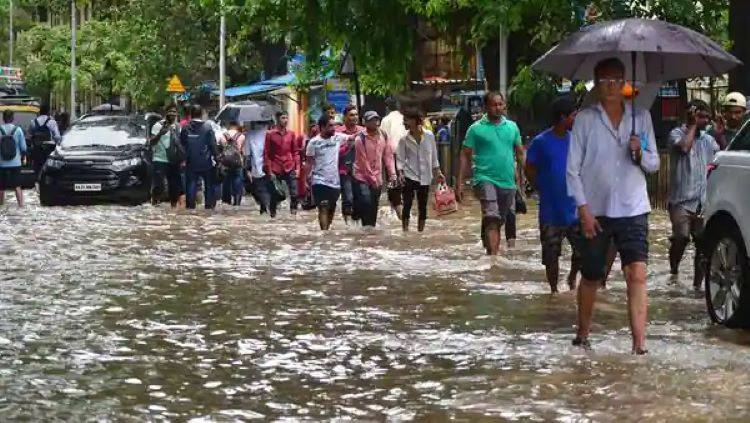
Even though rainfall levels appear "normal" across the country as a whole, rainfall across India this season has been marked by wide variations, reportedly the worst since 1901, as the penultimate month of the four-month Southwest Monsoon approaches.
Parts of Rajasthan, Kerala, Madhya Pradesh, and Odisha were hit by flooding and heavy rains just last week. Meanwhile, Uttar Pradesh, Jharkhand, and Bihar are experiencing drought-like conditions due to a lack of rain. The rainfall patterns of the current season have created the worst geographical skew of monsoon between the Gangetic plains and the rest of India in recorded history.
According to data from the India Meteorological Department (IMD), east and northeast India saw an 18% deficit in rainfall between 1 June and 10 August, whereas the central and southern regions saw excesses of 24% and 28%, respectively. Data from the agriculture ministry in July showed that this year's paddy planting had decreased by 13% as a result of erratic rains.
The IMD had predicted rainfall over the nation would be normal to above normal, with precipitation between 94 and 106 percent of the Long Period Average (LPA) of 422.8 mm, for the second half of the monsoon that ends in September. LPA is the amount of rain that has been observed in a specific area for a given interval averaged over a protracted period. When predicting the quantitative rainfall for that area during a particular month or season, it serves as a benchmark.
According to the IMD, rain chances in the northeast and Gangetic plains are likely to improve over the coming weeks, but not by enough to make up for the shortfall. "There is a chance that states like UP and Bihar will experience typical rainfall toward the end of the season. However, it won't make up for the shortfall," according to M. Mohapatra, the IMD's director general of meteorology.
Wide Spatio-temporal variations in the monsoon from year to year, or even within one season, are not uncommon, according to meteorologists. "In recent years, we have noticed a trend where the overall monsoon looks 'normal,' but the spatial and temporal variability is quite extreme. Although the climate is a significant factor, Deekshith Nevil Pinto, deputy news editor at The Weather Channel India, explained that yearly variations are more related to changes in global wind and sea-surface temperature patterns.
"This monsoon is experiencing rainier-than-average conditions due to the persistent presence of the La Nia base state over the Pacific. The same factor could cause excessive rainfall in India's Central, Eastern, and Northeastern regions in September and October.
La Nia is a global weather phenomenon that has been present for the past two years. It causes a cooling of the tropical west coast of South America's ocean surface waters. As a result, there is a decrease in air pressure over the Western Pacific, increasing rainfall. La Nia, a rare meteorological occurrence, is likely to last into the third year.
The monsoon trough was kept south of its normal location in August due to powerful low pressure systems from the Bay of Bengal. Because of this, the monsoon remained active—in some areas, it was even vigorous. However, the eastern side of the trough has been moving south repeatedly, depriving Uttar Pradesh of prolonged rainy spells, according to Pinto.
Mohapatra attributed these alterations to internal variability, or the climatic shifts that naturally take place in weather systems, which includes the intricate interaction between sea surface temperatures and winds.
On the whole, the monsoon is developing normally, and La Nia has brought us plenty of rain. With the exception of UP, Bihar, West Bengal, and Jharkhand, nearly all of the states are normal or in excess this year. According to him, the low pressure systems over the Bay of Bengal are primarily to blame.
















